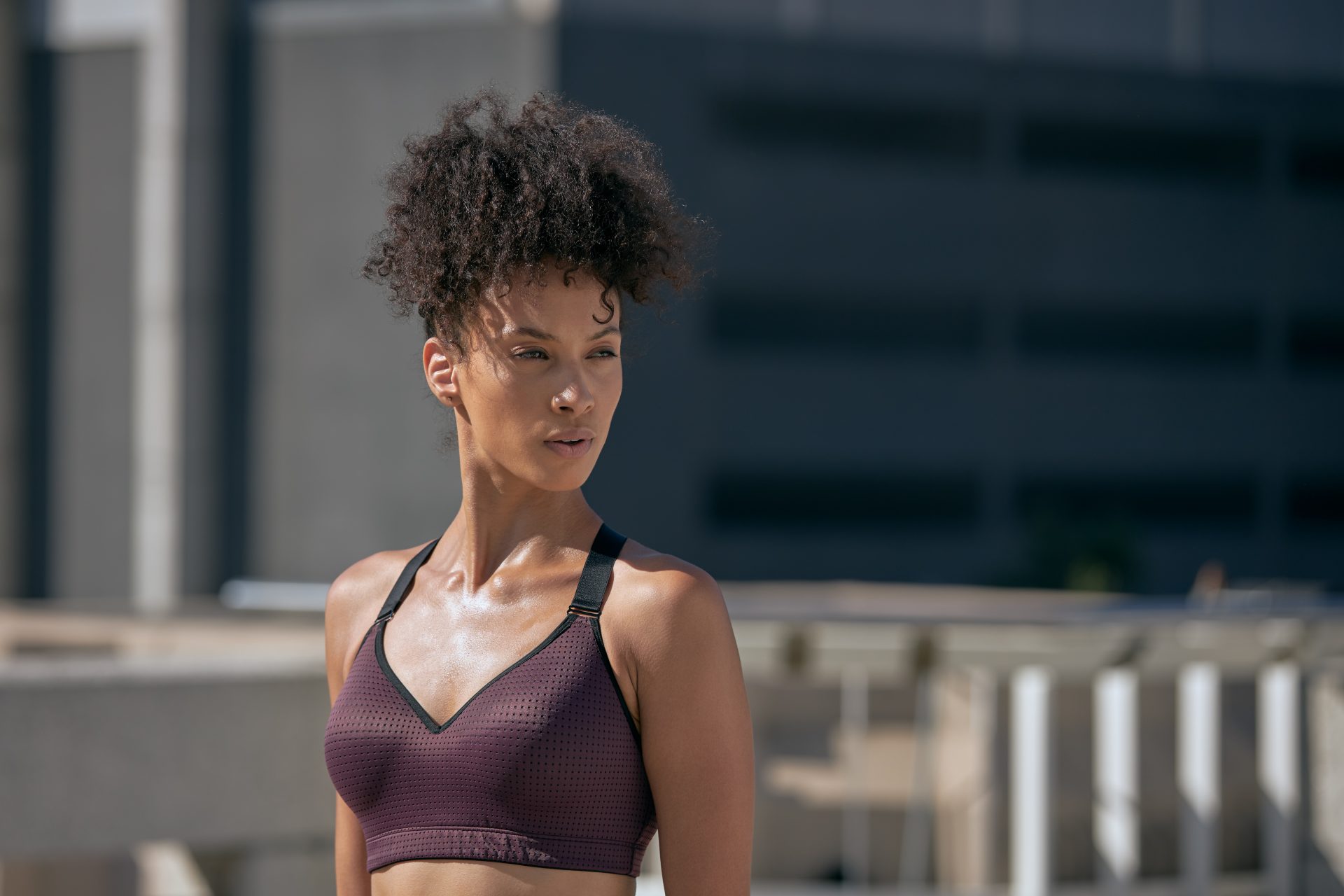Prescription bras might be in your future, helping you feel better supported during exercise. Here’s what that means.
We’re still obsessing over the moment Chloe Kelly pulled off her Lioness T-shirt and ran around the pitch during the final of the Women’s Euros last month. It was empowering in so many ways to see a woman’s bra-clad body without sexualisation or judgement, just pure joy at the goal scored by her strong legs and impressive endurance.
But it was also a defining moment in the lingerie world. Searches for sports bras spiked, and Twitter was alight with women asking one thing: where did she find a bra that was so supportive?
You may also like
Women’s Euros final: Chloe Kelly’s topless celebration is a powerful moment for women in sport
The simple answer is Nike. But the longer explanation is that it had been specially ‘prescribed’ to her via researchers at the University of Portsmouth’s research group in breast health. The group specialise in breast biomechanics, particularly in sport. Their breakthrough moment was in 2016, working with female athletes at the Tokyo Olympics.
“We worked with a handful of women to develop bespoke bras, but we realised we couldn’t do that for all 350 athletes at the games,” head of the research group Professor Joanna Wakefield-Scurr tells Stylist. “That’s where the idea of ‘prescription bras’ came from, as we looked at what was already on the market to buy and paired them with the needs of the athletes.”

Wakefield-Scurr and her team started working with the Lionesses ahead of the Euros to offer this same prescription service. “We assessed what the players were currently wearing, what their issues were, what their individual needs are, and then prescribed off-the-shelf bras to them,” she says.
Why is the right sports bra important?
Let’s have a quick recap on why your bra matters. Not only does it reduce pain and tissue damage, but when testing prescribed bras on athletes, the Portsmouth team also found that it improved their performance. 90% of the Olympic athletes who tested prescription bras felt better for wearing them.
“Wearing the right sports bra can change physiological parameters including your breathing frequency, how deeply you breathe and even change your heart rate to make you more economical when you’re exercising,” says Wakefield-Scurr.
You may also like
Sports bras: do our sports bra and breast support needs change with age?
“Reducing the movement of the breast with the right bra also improves your mechanical function. We’ve mainly looked at that in running and found a four-centimetre increase in stride length in those who run wearing a good supportive bra.”
That four centimetres can equate to a full mile over the length of a marathon – no mean feat when you’re 25 miles in.
Will we have prescription bras?
It is hopeful news that Wakefield-Scurr’s team found off-the-shelf bras really can support the needs of athletes when they are properly fitted. Certain shops will help kit you out with a sports bra suited to your body and chosen activity onsite, from Sports Direct to M&S and Lululemon.
But if you’ve ever scoured the virtual sports bra shelf, you’ll know how overwhelming it is. Do you want racer back or cross back, cupped or seamless, high impact or medium support? Finding what fits you is the problem that faced the Tokyo Olympics team, the Lioness and everyday exercisers.
“I don’t think you necessarily need bespoke products – there are good sports bras out there that will work for the majority of women. But the problem is navigating through the market and knowing what your needs are, what your breasts shape is, how long your torso is compared to the width of your back and then what styles will sit right on you,” says Wakefield-Scurr.
So how realistic is it for the general population to have prescription bras like her team gave to the pros? It really could be a reality one day – but it will be less personal shopper picking your best fit and more standardised ways of measuring your anatomy to know what styles work for you. Think wide back + long torso + small chest size = wide strapped and cross back, for example.
You may also like
Best sports bras for every kind of workout, if you are inspired by Chloe Kelly
“We’re only just starting that journey. We have built a scientific base and an expert knowledge base and we need to be able to share that with women so they know how to find their fit,” Wakefield-Scurr says.
The athleisure boom is undoubtedly great for offering choice and normalising women in these products. But it also means there are many products out there made cheaply, without science-backed design (even if they cost a fortune). “From my perspective, if someone is selling a product saying that it’s great for yoga, we should know how they tested it,” agrees Wakefield-Scurr. “I don’t know if it’s about regulating or protecting the term ‘sports bra’, but there should be science behind the products.”
Perhaps one day it will be easier to tell what is legitimately well-fitting. But until then, there are ways to find a well-fitting sports bra without a prescription.

How to find a good sports bras
Compression vs encapsulation
According to Wakefield-Scurr, sports bras come in three main styles: compression, encapsulation or hybrid.
“Compression styles work by just pushing the breast tissue in towards the chest. In my opinion, these are not good. I don’t even class most of them as sports bras because they’ve got no structure in them – they are just flat, more like a crop top,” Wakefield-Scurr says.
“There’s another type of sports bra that uses encapsulation that works by separating the left and the right breast in structured or moulded cups. These are a bit more like everyday bras with some structure or moulding of the cups.
“Hybrid bras have some encapsulation of the cups and some compression, pressing inwards. My advice is to always look for those with some form of encapsulation for full support.”
Adjustable sizing
“I would estimate 95% of everyday bras have adjustments and I always find it strange that there are so many sports bras that aren’t adjustable,” Wakefield-Scurr says. Think pull-on bras that have no hook eye closures on the back or moveable rings on the straps.
“We see a huge variety in torsos and shoulders and the length of the strap that works for women will be so different. Adjustable bras really are a must,” she says.
Comfort
Personal preference is a key factor in your fit. “I always look for shoulder straps that sit in a different place to my everyday bra because I find that more comfortable. But I hear some women say they don’t like the racer styles that sit high on the trapezius muscle because they feel it’s dragging their shoulders down. These aren’t necessarily factors based in science, but they have implications for the person wearing them,” says Wakefield-Scurr.
Images: Getty
Source: Read Full Article
